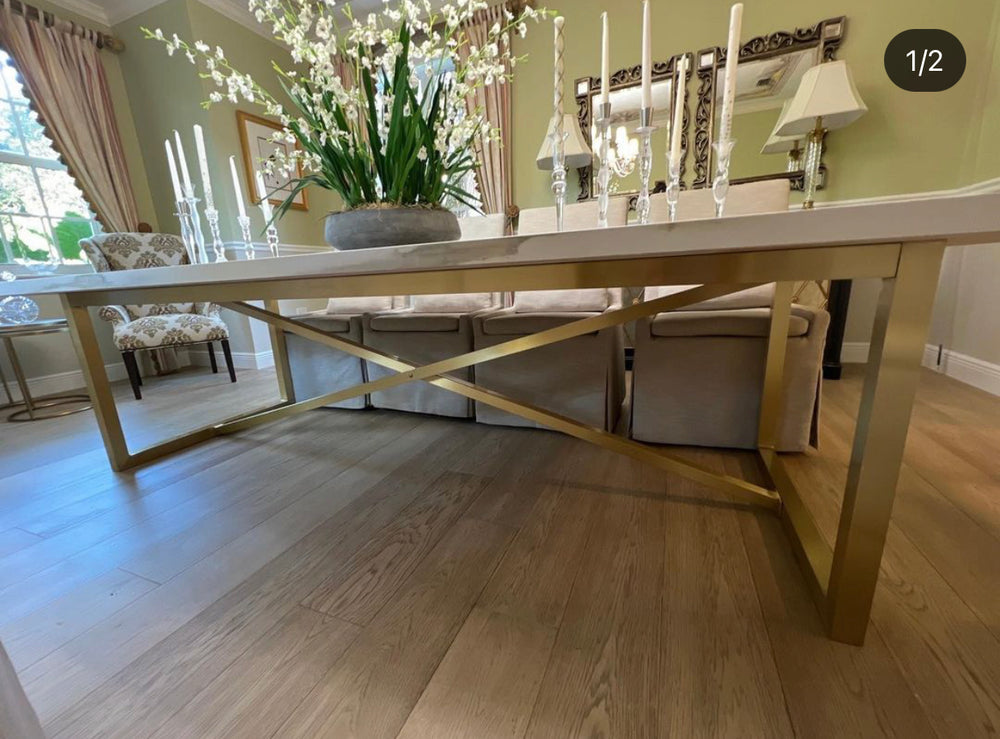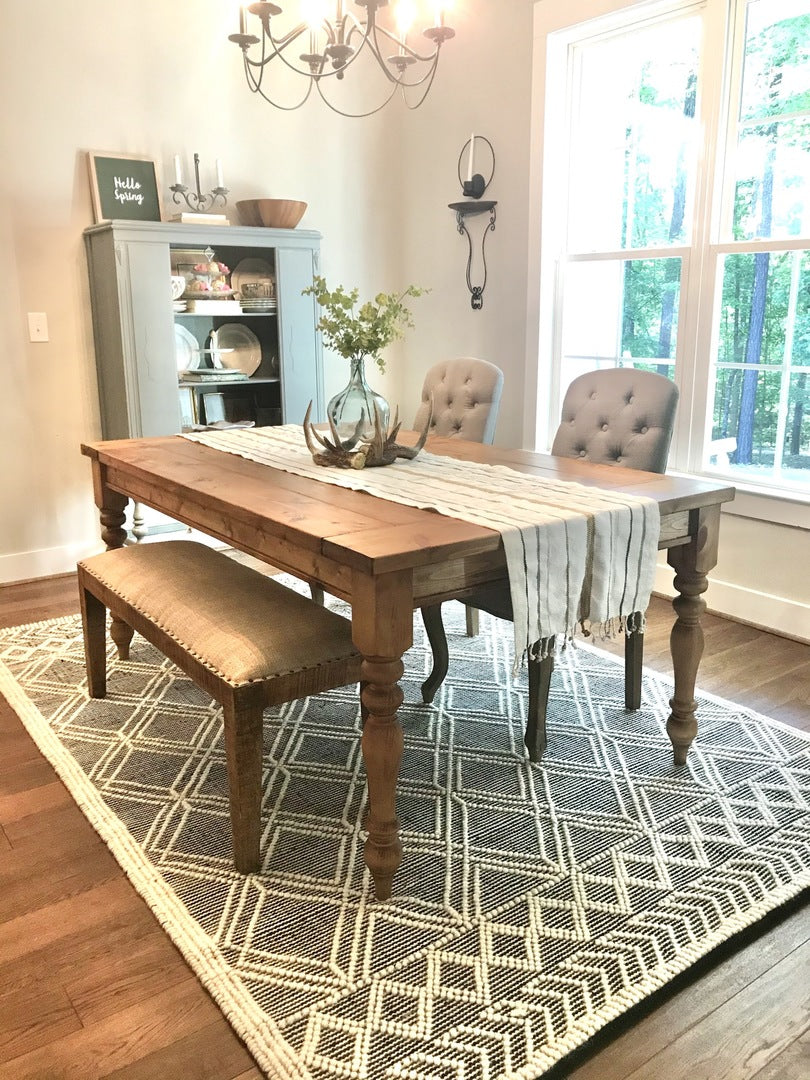The Ultimate Guide to Choose Resilient Dining Room Table Legs
The Ultimate Guide to Choose Resilient Dining Room Table Legs
Blog Article
A Detailed Consider Dining Table Leg Styles: Finding the Perfect Suit
Choosing the right eating table leg style is crucial for both aesthetic allure and useful functionality. For those with larger tables, trestle legs ensure strong support, whereas hairpin legs present a mid-century modern ambiance with their minimal design. The x-shaped legs blend modern style with boosted security.
Traditional Four Legs
Among the different types of dining table leg styles, the traditional four-leg design remains a timeless option for numerous homes. Four legs provide balanced assistance, making sure the table continues to be secure and qualified of bearing substantial weight (dining room table legs).
From a visual viewpoint, the typical four-leg layout can be conveniently adjusted to various interior designs. Whether crafted from wood, metal, or a combination of products, these legs can be elaborately carved, streamlined and minimalistic, or anything in between. Their convenience enables them to match both rustic and modern settings perfectly.
Moreover, the uncomplicated framework of the four-leg design assists in simplicity of movement and positioning within a space. Unlike even more complex bases, this style decreases obstructions, giving adequate legroom for diners. In recap, the typical four-leg eating table leg design marries sustaining beauty with practical capability, making it a sharp choice for those looking for both type and feature in their dining furnishings.
Pedestal Base
Frequently commemorated for its elegant and space-efficient design, the pedestal base is a notable choice to the traditional four-leg setup in eating table leg designs. Without edge legs, restaurants are afforded greater freedom of motion, making it an excellent choice for round and oval tables that promote even more intimate and comprehensive gatherings.
In addition, the stand base's main assistance can handle substantial weight, enabling for the usage of heavier tabletops, such as marble or thick hardwood. This strength coupled with its aesthetic flexibility makes the pedestal base a popular option in both conventional and contemporary interior settings. It can seamlessly integrate with different design motifs, from timeless style to minimalist modernity. The central column itself offers a canvas for intricate layouts and imaginative expressions, adding an element of visual rate of interest below the table. In summary, the stand base integrates performance snappy, making it a fine-tuned and useful option for varied eating environments.
Trestle Legs
Trestle legs give a robust and timeless structure for eating tables, characterized by their straight cross-bracing and strong support beams. Originating from medieval times, this style has advanced yet kept its necessary framework, making it a perennial fave in both conventional and modern settings. The main trestle light beam, commonly supported by 2 or even more vertical blog posts, provides exceptional security, allowing for bigger table sizes without the requirement for added legs.
A learn this here now significant benefit of trestle leg tables is the ample legroom they use. Unlike tables with four corner legs, the lack of blockages at the table's edges offers unblocked space for chairs and restaurants, boosting comfort and availability. This makes trestle tables ideal for fitting larger celebrations, whether in a dining-room or a banquet hall.
The visual versatility of trestle legs is noteworthy. Readily available in a variety of products such as timber, metal, and composite, they can be ended up to enhance a vast array of indoor designs. From rustic farmhouse to streamlined modern designs, trestle legs can be customized to fit private preferences. Their long-lasting allure and functional benefits make trestle legs a compelling choice for those seeking both style and usefulness in their eating table.
Barrette Legs

The allure of hairpin legs depends on their simplicity and adaptability - dining room table visit here legs. Available in a series of products, consisting of steel and brass, they can be finished in countless colors to match various indoor designs. Whether coupled with a rustic wood table top or a modern glass surface area, hairpin legs effortlessly blend functionality with a touch of vintage beauty
Resilience is another significant feature of barrette legs. In spite of their delicate appearance, these legs are crafted to birth considerable weight, making certain the table continues to be secure and safe and secure. Additionally, they are fairly simple to set up, making them a prominent option for do it yourself lovers and expert furniture makers alike.
X-Shaped Legs

Built from materials such as steel, timber, or a mix of both, X-shaped legs can be tailored to match different design preferences. Steel legs often offer a sleek and industrial feeling, suitable for loft-style apartments and modern eating rooms.
Additionally, the engineering behind X-shaped legs makes sure also weight distribution, lessening the threat of wobbling and enhancing toughness. This makes them particularly appropriate for bigger dining tables that need added support. Essentially, X-shaped legs mix functional engineering with modern aesthetics, making them an ageless choice for varied eating environments.
Verdict
An extensive understanding of dining table leg designs discloses the distinctive characteristics and benefits of each layout. Traditional 4 legs provide security and timeless allure, while stand bases give legroom and a structured look. Trestle legs make certain durable support for bigger tables, and barrette legs introduce a mid-century contemporary visual. X-shaped legs combine modern layout with improved stability. Selecting the suitable leg style ensures both functional and aesthetic satisfaction in any dining space.
Report this page